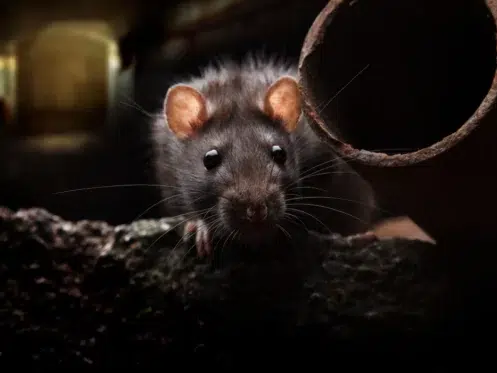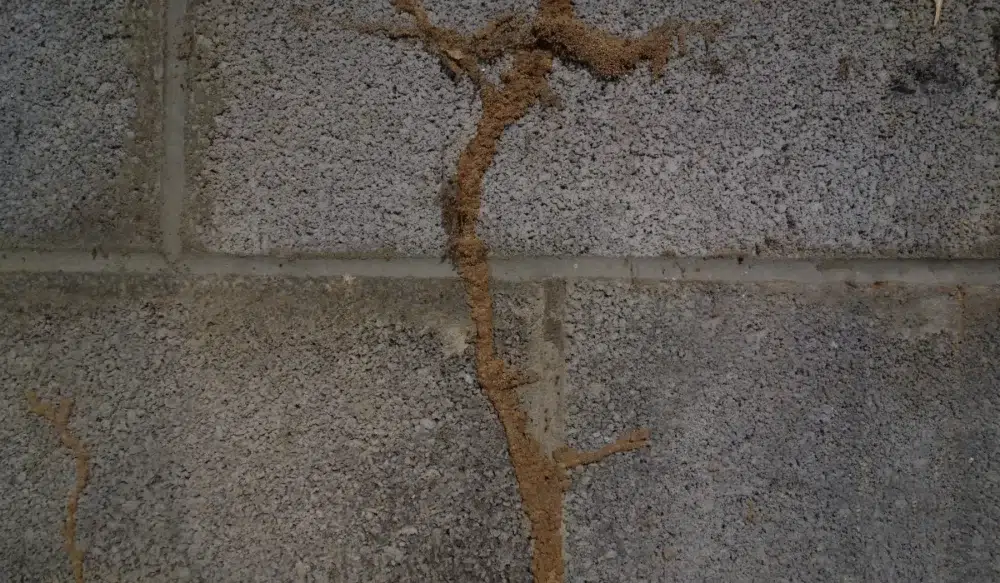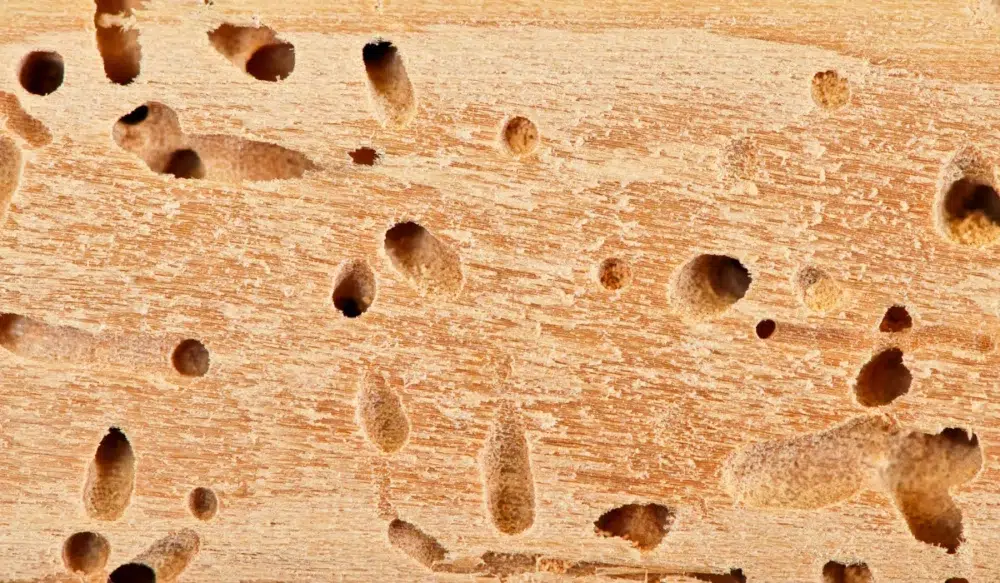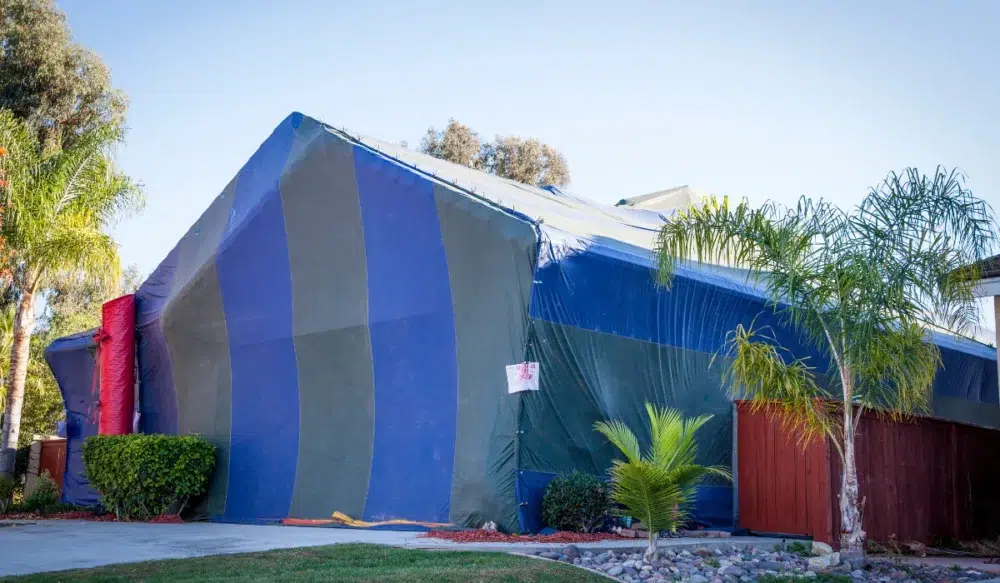Monsoon season brings more than just rain and humidity to Arizona; it also brings an increase in roof rat activity.
These agile rodents take advantage of the extra moisture, abundant food sources, and overgrown vegetation. If you live in Phoenix, Tucson, or nearby areas, chances are you’ve seen the signs or heard the scurrying in your attic.
Understanding how roof rats behave and what draws them to your property can help you stop an infestation before it gets worse.
Key Takeaways
- Roof rat infestations increase during Arizona’s monsoon season due to more water and food sources
- Common signs include gnaw marks, droppings, and scurrying noises in attic spaces
- Citrus trees, bird seed, and pet food left outside attract roof rats to your yard
- Local pest control experts like Green Home Pest Control can help with targeted rat control and exclusion services
What Are Roof Rats?
Roof rats, also known as black rats or Rattus rattus, are sleek, long-tailed rodents that are excellent climbers. Roof rats often nest in rooflines, attics, and palm trees throughout Maricopa and Pima counties. Unlike the stockier Norway rat, roof rats have large ears and a pointed nose.
These rats are omnivores, but they especially love citrus fruit, bird seed, pet food, and anything else left out in the open.
Why Roof Rats Thrive During Monsoon Season
Arizona’s monsoon season brings intense storms followed by periods of high humidity. This shift in the weather supports a rise in vegetation and fallen fruit, which gives rats more food and nesting materials.
Here’s why roof rats in Arizona become a bigger problem during monsoon season:
- Moisture attracts rats seeking water from leaky faucets or standing rainwater
- Fallen fruit from citrus trees and palm litter provides easy access to food sources
- Overgrown landscaping offers shelter and hiding spots, especially when tree branches touch rooftops
- Clogged gutters and blocked eaves create easy entry points into your attic
Signs of Roof Rat Infestation
Detecting a roof rat infestation early can save you the headache of long-term damage. Look for these signs of roof rat activity:
- Droppings about ½ inch long with pointed ends (different from Norway rat droppings)
- Scurrying or scratching sounds in the attic or walls at night
- Gnaw marks on wood, electrical wires, or storage boxes
- Grease marks along walls or pipes
- Rat droppings or nesting materials in sheds, garages, or under eaves
You might also spot damaged fruit on your citrus trees or hear activity near rooflines after dark.
Common Entry Points for Roof Rats
Roof rats don’t need much space to get into your home, just a hole the size of a quarter. During monsoon season, they’ll find their way in through:
- Open vents or gaps in eaves
- Loose shingles or stucco cracks
- Gaps around faucets and utility lines
- Tree branches that overhang the roof
- Unsealed attic vents or air conditioning lines
To stop a roof rat infestation, you need to seal up entry points with materials they can’t chew through, like steel wool and hardware cloth.
How to Reduce Roof Rat Activity Around Your Home
Controlling roof rats in Arizona requires a proactive approach, especially when monsoon season hits.
Here are a few practical steps:
- Trim tree branches so they don’t touch the roof or walls
- Pick up fallen fruit from citrus trees daily
- Store pet food and bird seed in sealed containers
- Remove wood piles and other clutter from your yard
- Inspect rooflines and attic vents for gaps or damage
Snap traps baited with peanut butter often work for small infestations, but severe infestations may require professional rodent control services.
Why Roof Rats Are More Than Just a Nuisance
Roof rats don’t just sneak into your attic; they cause damage and can make you sick. They can chew through electrical wires (which increases fire hazards), contaminate stored food, and spread diseases through their droppings.
The problem gets worse because roof rats reproduce quickly. A single female can have six litters per year, so it doesn’t take long for a small rat problem to turn into a full-blown rat problem.
Professional Roof Rat Control in the Phoenix Area
If you’re dealing with roof rats in Arizona, DIY methods often fall short. Snap traps and bait stations can provide temporary relief, but unless you eliminate entry points and nesting areas, the problem will return.
At Green Home Pest Control, we specialize in safe, thorough roof rat removal. Our local technicians know how roof rats behave in Phoenix, Chandler, Tucson, and surrounding neighborhoods. We’ll inspect your property, identify signs of roof rat infestation, and implement a custom solution using safe, eco-conscious methods.
We also help with long-term prevention by sealing vulnerable areas and advising on sanitation, food sources, and landscaping.
Ready to get ahead of roof rat season?
If you’ve noticed signs of roof rat activity or want to prevent a future infestation, Green Home Pest Control can help.
Give us a call, we’re happy to help. We’re locally owned, and we understand the unique pest pressures of Arizona homes. Let’s make sure your attic doesn’t turn into a rat hotel this monsoon season.
FAQs
What attracts roof rats to Arizona homes?
Roof rats look for water, citrus fruit, bird seed, and shelter. Monsoon season increases these resources, making homes more attractive.
Are roof rats dangerous?
Yes. Roof rats can chew wires, damage insulation, and spread germs through droppings. It’s essential to act quickly if you see signs.
How can I tell the difference between roof rats and Norway rats?
Roof rats are smaller, have longer tails, and prefer high places like attics. Norway rats are bulkier and stay closer to the ground.




